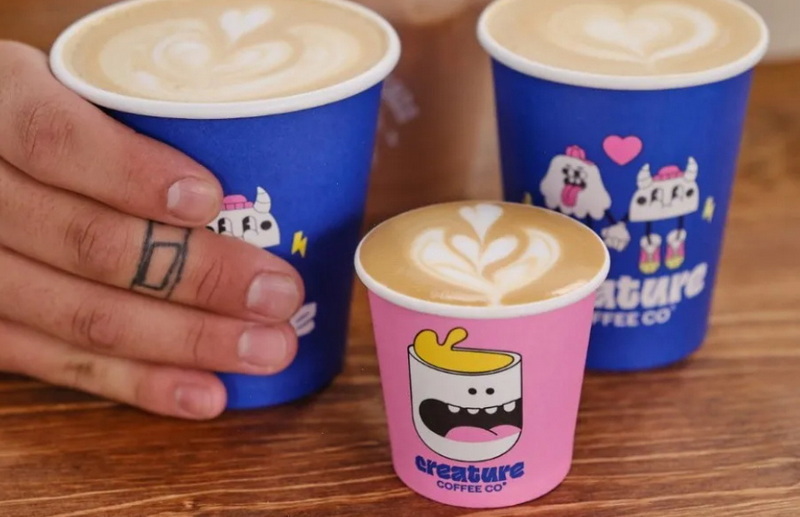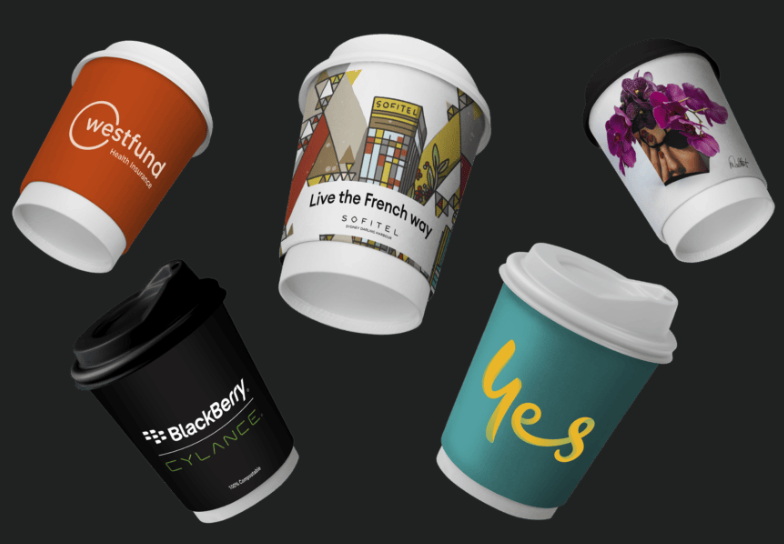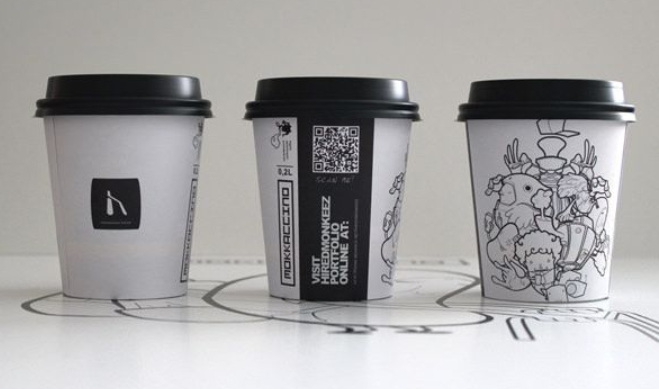
Content Menu
● Introduction to Disposable Cup Sizes
>> Common Disposable Cup Sizes
● Factors to Consider When Choosing Disposable Cup Sizes
● Materials Used for Disposable Cups
● Customizing Disposable Cups
● The Role of Disposable Cups in Marketing
● Trends in Disposable Cup Sizes
● Challenges and Opportunities
● Best Practices for Using Disposable Cups
● Case Studies: Successful Use of Disposable Cups
● Future of Disposable Cups
● Impact of Disposable Cups on Consumer Behavior
● Strategies for Reducing Waste
● Conclusion
● Frequently Asked Questions
>> 1. What are the standard disposable cup sizes?
>> 2. How do I choose the right disposable cup size for my business?
>> 3. What materials are used to make disposable cups?
>> 4. Can I customize disposable cups with my brand's logo?
>> 5. How does the size of a disposable cup affect customer satisfaction?
Choosing the right disposable cup size is crucial for businesses, as it directly impacts customer satisfaction and operational costs. Disposable cups come in various sizes, each suited for different types of beverages and consumption scenarios. In this article, we will explore the different disposable cup sizes, their uses, and how to select the most appropriate size for your business needs.

Introduction to Disposable Cup Sizes
Disposable cups are made from materials like paper, plastic, or biodegradable materials and are used once before being discarded. The most common disposable cup sizes include 8 oz, 12 oz, 16 oz, and 20 oz. These sizes cater to a range of beverages, from small coffee servings to large cold drinks.
Common Disposable Cup Sizes
| Size (oz) | Height (mm) | Volume (ml) | Typical Use |
| 4 oz | 61 mm | 118 ml | Espresso shots, samples |
| 8 oz | 90 mm | 227 ml | Small coffee, tea, large ice cream |
| 12 oz | 110 mm | 355 ml | Medium hot drinks, regular cold drinks |
| 16 oz | 137 mm | 473 ml | Large hot drinks, medium cold drinks |
| 20 oz | 159 mm | 591 ml | Large cold drinks |
Disposable cup sizes are designed to meet specific needs. For instance, the 4 oz size is ideal for serving espresso shots or samples, while the 20 oz size is better suited for large cold drinks like smoothies or iced coffee.
Factors to Consider When Choosing Disposable Cup Sizes
When selecting disposable cup sizes, several factors should be considered:
1. Type of Beverage: Different beverages require different cup sizes. For example, hot coffee is often served in smaller cups (8 oz or 12 oz), while cold drinks like smoothies or iced coffee are better suited for larger cups (16 oz or 20 oz).
2. Customer Preferences: Understanding your target audience's preferences is vital. Some customers may prefer larger cups for value, while others might prefer smaller cups for convenience.
3. Environmental Impact: Choosing eco-friendly cups can enhance your brand's image and appeal to environmentally conscious consumers. Biodegradable or compostable cups are becoming increasingly popular as businesses strive to reduce their environmental footprint.
4. Cost Efficiency: Larger cups may be more cost-effective for businesses serving large quantities of beverages, but they can also lead to waste if not fully utilized. It's important to balance cost with customer satisfaction.
5. Brand Image: Customizing cups with your brand's logo can increase visibility and customer loyalty. This is particularly effective for businesses looking to differentiate themselves in a competitive market.

Materials Used for Disposable Cups
Disposable cups are made from various materials, each with its advantages:
- Paper Cups: Biodegradable and compostable, paper cups are a popular choice for eco-conscious businesses. They are suitable for hot beverages and can be customized with designs or logos.
- Plastic Cups: More durable but less environmentally friendly, plastic cups are often used for cold drinks. They are resistant to moisture and can withstand the rigors of outdoor use.
- Biodegradable Cups: Made from materials like bagasse, these cups offer a sustainable alternative. They are compostable and can reduce waste significantly.
Customizing Disposable Cups
Customizing disposable cups with your brand's logo or design can enhance customer engagement and brand recognition. This can be particularly effective for businesses looking to differentiate themselves in a competitive market. Customized cups can also serve as a form of advertising, increasing brand visibility and customer loyalty.
The Role of Disposable Cups in Marketing
Disposable cups can play a significant role in marketing strategies. By customizing cups with promotional messages or limited-time offers, businesses can create a buzz around their products. Additionally, eco-friendly cups can appeal to environmentally conscious consumers, enhancing the brand's image and reputation.
Trends in Disposable Cup Sizes
Recent trends show an increase in demand for larger cup sizes, particularly for cold beverages. This is driven by consumer preferences for value and convenience. However, there is also a growing interest in smaller, more sustainable options as consumers become more environmentally aware.
Challenges and Opportunities
One of the challenges faced by businesses is balancing customer preferences with environmental concerns. Larger cups may offer better value but can lead to waste, while smaller cups may be more sustainable but less appealing to customers seeking larger servings. Opportunities exist in developing sustainable materials and innovative designs that meet both customer needs and environmental standards.
Best Practices for Using Disposable Cups
To maximize the use of disposable cups, businesses should consider the following best practices:
- Optimize Cup Size: Ensure that the cup size aligns with the beverage being served to minimize waste.
- Choose Sustainable Materials: Select materials that are biodegradable or compostable to reduce environmental impact.
- Customize Effectively: Use customization to enhance brand recognition and customer engagement.
Case Studies: Successful Use of Disposable Cups
Several businesses have successfully leveraged disposable cups to enhance their brand image and customer satisfaction. For example, a popular coffee chain customized their cups with seasonal designs, which became a social media sensation and increased customer loyalty. Another business switched to biodegradable cups, appealing to environmentally conscious consumers and improving their brand reputation.
Future of Disposable Cups
The future of disposable cups is likely to be shaped by sustainability and innovation. As consumers become more environmentally aware, there will be a greater demand for eco-friendly cups. Businesses that adapt to these trends by offering sustainable options will likely see an increase in customer loyalty and brand recognition.
Impact of Disposable Cups on Consumer Behavior
Disposable cups can influence consumer behavior in several ways. For instance, customized cups can encourage customers to share their experiences on social media, creating a viral marketing effect. Additionally, eco-friendly cups can appeal to consumers who prioritize sustainability, potentially increasing brand loyalty among this demographic.
Strategies for Reducing Waste
To reduce waste associated with disposable cups, businesses can implement several strategies:
- Recycling Programs: Encourage recycling by providing designated bins for cup disposal.
- Reusable Options: Offer reusable cups as an alternative to disposable ones.
- Sustainable Materials: Use biodegradable or compostable materials for disposable cups.
By adopting these strategies, businesses can minimize their environmental impact while maintaining customer satisfaction.
Conclusion
Choosing the right disposable cup size is a strategic decision that can impact both customer satisfaction and operational efficiency. By understanding the different sizes available and aligning them with your business needs, you can optimize your beverage service while maintaining a positive brand image.

Frequently Asked Questions
1. What are the standard disposable cup sizes?
The standard disposable cup sizes include 8 oz, 12 oz, 16 oz, and 20 oz. These sizes are commonly used for various beverages, from small coffee servings to large cold drinks.
2. How do I choose the right disposable cup size for my business?
To choose the right size, consider the type of beverage, customer preferences, environmental impact, cost efficiency, and brand image. For example, hot coffee is often served in smaller cups, while cold drinks require larger ones.
3. What materials are used to make disposable cups?
Disposable cups are made from paper, plastic, or biodegradable materials. Paper cups are eco-friendly, plastic cups are durable, and biodegradable cups offer a sustainable option.
4. Can I customize disposable cups with my brand's logo?
Yes, customizing disposable cups with your brand's logo can enhance customer engagement and brand recognition. This is a popular strategy for businesses looking to differentiate themselves.
5. How does the size of a disposable cup affect customer satisfaction?
The size of a disposable cup can significantly affect customer satisfaction. Larger cups may offer better value, but smaller cups can be more convenient. Understanding customer preferences is key to choosing the right size.

















